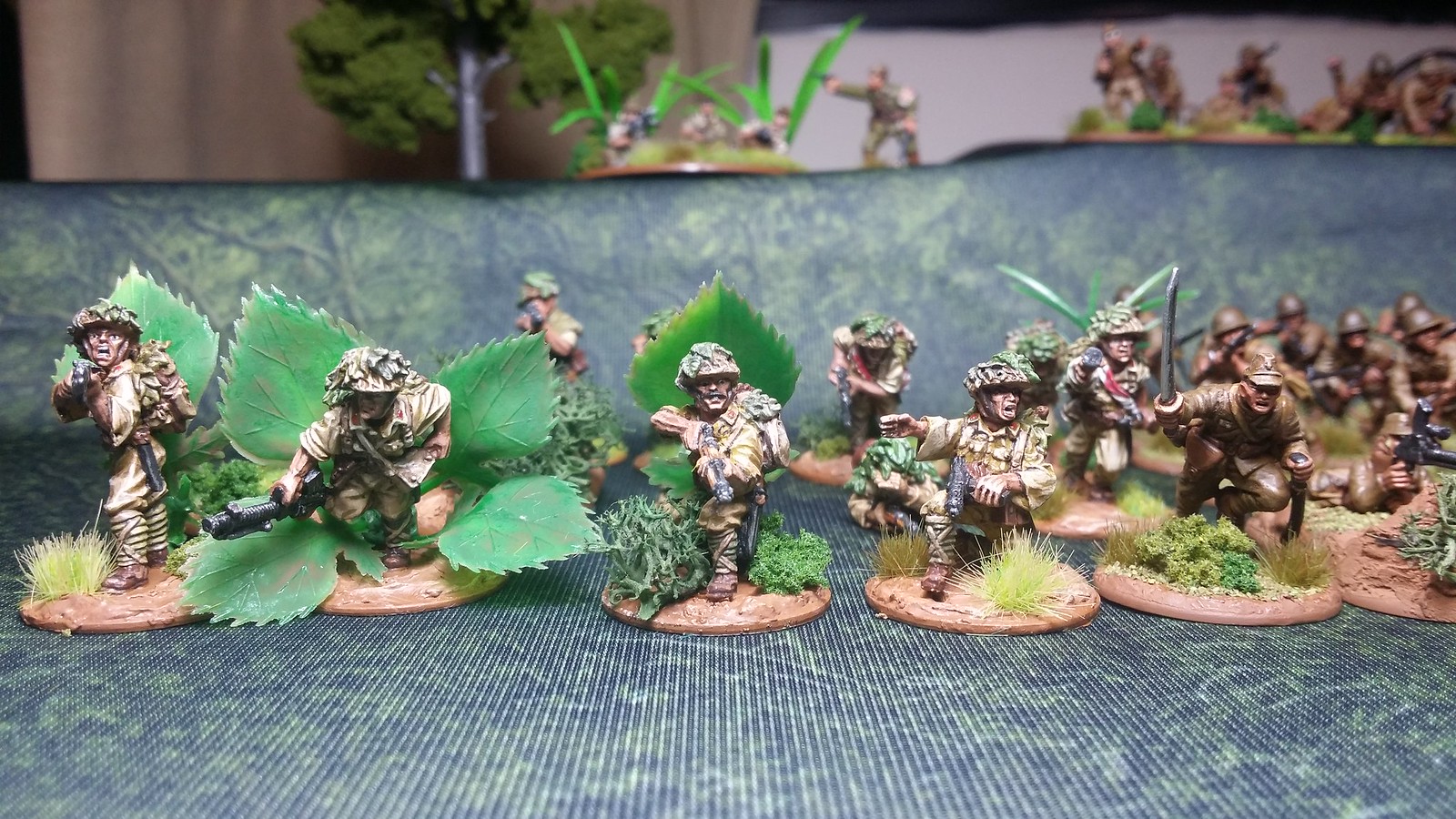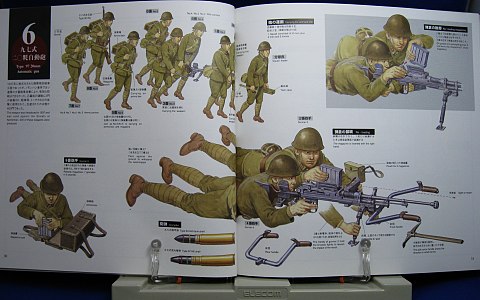Here they are, my Imperial Japanese Army rifle platoon, completed after nearly six months work. I also managed to finish off an MMG support with a Kempeitai officer providing motivation in the field.
The figures are a mix of metal and plastic from Warlord, The Assault Group and Westwind. After completing a rifle and grenadier section in plastic I grew weary of fiddly multi-part plastic kits and switched back to metals.
Perhaps its part reactionary nostalgia, but I prefer metals. They cost more, sure, but they usually have plenty of character and spare me the tedium of assembly and filing. This means a quicker route to painting and therefore completion for the tabletop.
There was lots of experimentation in this platoon as it was my first World War 2 project. Colours went from very dark to a brighter scheme in order to make the drab modern uniforms pop up better on the tabletop. Of course, in real life drab colours which blend in with the landscape are ideal for uniforms, but they make for a poor visual feast.
Lesson learned, what is useful in life on the battlefield is a disadvantage in tabletop wargaming.
Second Lieutenant and Sergeant. The lieutenant's uniform
is a blend of English Uniform and Russian Uniform greens.
For now, the plastic grenadiers and rifles can be the fire support while the metal chaps in shrubbery do the advance flanking.
White-gloved commander on the far right.
Rather than the more handsome and dashing Hiroo Onoda from Stoessi's Heroes, I went for the more imperious but dowdy commander from Warlord Games. Although too slim, he reminds me more of Lieutenant General Yamashita Tomoyuki, the Tiger of Malaya.
The sergeant is from The Assault Group, which have the second best faces after Warlord's jungle fighters, below.
The Warlord plastics and the Westwind minis have very caricatured faces, reminiscent of the propaganda posters during the war. Some of the Westwind minis look like Asian vampires with their two widely-spaced fangs. That said, the metals blend together quite well. The section below mixes TAG with Westwind. I love figures with vegetation camouflage. They really offer points to brighten the model and add visual interest.

Plastic grenadiers with some minor conversions to conform better to a 45º firing angle. They benefitted from delaying basing until the very end of the project. I acquired a DIY static grass applicator and I went a little overboard with it. I should leave a little more mud base showing in future. I've got some longer grass - 6mm and 10mm - on their way from Arcane Scenery to experiment with making my own long tufts and a far cheaper rate than pre-made ones.
I'm going to take a break from Japanese infantry for a while. Their platoons are nearly double the size of Allied ones and completing one amidst job and family commitments really tested my stamina.
Since the British players in my group have yet to have their platoons ready (mirroring history), I'm going to do some of the forgotten armies of the Commonwealth next so I can host complete games at home.
I've started work on a platoon of Argyll and Sutherland Highlanders with their distinctive pith helmets. These should be relatively fast to finish as the Perry Desert Rats are less fiddly than Warlord plastics and the khaki drill scheme is straightforward.
I'll probably follow up with some vehicles after, a Lancaster and a Ha-Go or Chi-Ha. Subsequent infantry will be some metal Indians that I am really looking forward to.















